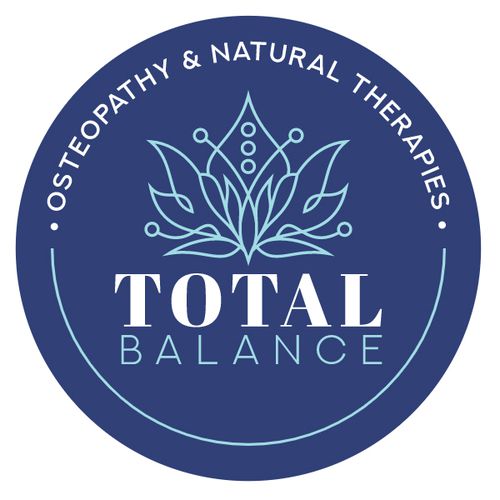
If you have back pain, stiff joints, headaches, arthritis, digestive problems, fatigue or even period pain, an osteopath can help. Osteopathy is a holistic discipline that uses gentle stretching, soft tissue massage and joint manipulation to ease symptoms and improve your overall health and allow you to lead an active life. The gentle nature of an osteopathic treatment makes it ideal for everyone, even newborns, the elderly or the frail.
Osteopaths Help the Whole Family
Osteopaths can ease dad's bad back, help mum's body regain its strength after childbirth and even assist grandma with her arthritis. If your baby's not sleeping well, your toddler's running amok or your 10-year-old's struggling at school, an osteopathic treatment plan can improve the nerve supply in their body to restore them to optimal health. The benefits of osteopathy care go beyond treating musculoskeletal conditions, as it improves the quality of life for the entire family.
Osteopaths assess the skeleton, joints, muscles, nerves, connective tissue, circulation and organ function. This 'whole body' approach makes osteopathy a very effective treatment for a range of issues. According to Annex Osteopathy, some of the common reasons why many people seek this type of treatment are:

Source: Annex Osteopathy
- Back, neck, shoulder, hip, knee, ankle and wrist pain
- Cervical pain
- Headaches, dizziness or loss of balance
- Repetitive strain injury and other work-related injuries
- Joint pain due to arthritis, tendonitis or TMJ disorders
- Unexplained tiredness and chronic fatigue
- Indigestion, constipation and Irritable Bowel Syndrome
- Sports injury
- Shin splints
- Gynaecological, pre- and post-natal problems
- Hyperactivity, learning and behavioural problems in children
- Colic, misshapen head, reflux, poor sleeping in babies
- Poor posture or compromised musculoskeletal framework
Osteopathy has a long list of health benefits that anyone can benefit from, including relieving chronic pain, treating migraines and managing osteoarthritis. The main reason to see an osteopath is to treat your health condition, though it is also beneficial if you want to discuss any issues with them such as digestive problems or sleep difficulties.
What Makes Osteopathy Unique?
An osteopath doesn't just treat a specific injury or ailment. They will assess how an injury or pain relates to other parts of the body. If you have a sore knee, for instance, the osteopath will treat your knee injuries and assess whether you are compensating for your sore knee by placing more strain on your other leg, which may cause other problems over the long term.
Osteopathic practitioners employ a wide array of hands-on techniques, applying gentle pressure to the parts of the body that need adjusting without causing pain. During an osteopathic consultation, the practitioner will consider different factors, such as lifestyle and diet, before prescribing osteopathic treatment. They will also discuss with you any health issues or concerns you may have, such as back pain or digestive problems, to ensure that osteopathy can be beneficial for you as well as provide a direct solution.
What to Expect During an Osteopathic Consultation
An osteopathic treatment usually feels comfortable. The only sensation you may feel during the physical manipulation are slight muscle contractions, which a qualified osteopath feels necessary to perform to relax your muscles. Some osteopathic techniques also involve taking hold of your limbs to investigate the health of certain tissues and bones. This osteopathic treatment may be slightly uncomfortable when pressure is applied onto an inflamed or swollen area, though osteopaths do not cause pain during treatments.
While it is standard operating procedure for osteopathic practitioners to evaluate their clients' musculoskeletal health and other body systems before beginning the manipulative treatment, it would be helpful if you could share and be honest about the following during your initial consultation:
- Your medical history
- Family history of certain diseases
- Pain experience
- Your expectations from the treatment
- Concerns about your body's post treatment reaction
Osteopaths Help With Long-term Prevention
Osteopathic practitioners do not provide passive treatment, which is more common in conventional treatments. Besides performing manipulative techniques to relieve neck pain, stimulate blood flow, improve range of motion, or for other reasons why you may seek osteopathic medicine, the osteopath may also prescribe exercise programs and help you take responsibility for your own health by:
- Identifying causes of the problem e.g. workplace ergonomics
- Teaching you how to use your body less strenuously
- Helping you become aware of postural problems
- Devising individual exercise therapy and dietary programs
- Teaching relaxation techniques to reduce stress
- Working with other medical practitioners to help manage your symptoms
Osteopathy is a safe, gentle therapy that benefits people of all ages and enhances their wellbeing and lifestyle. If you or someone in your family suffers from musculoskeletal pain or any other medical condition, get in touch with an osteopath in your local area.
Originally published on Feb 12, 2011








